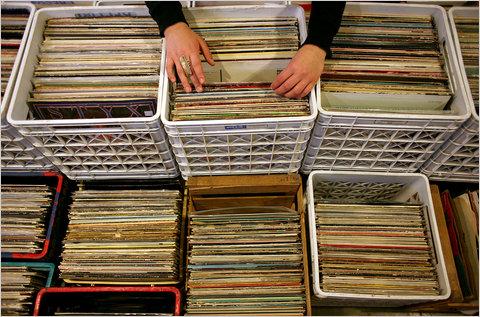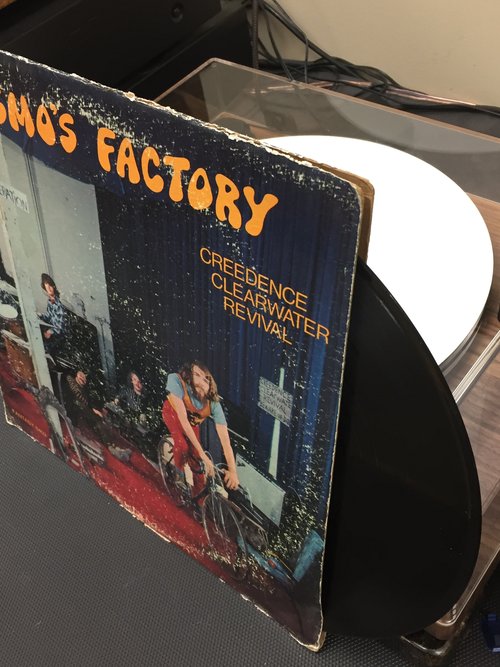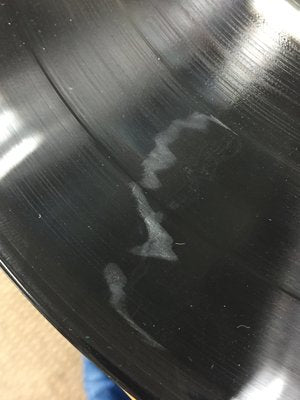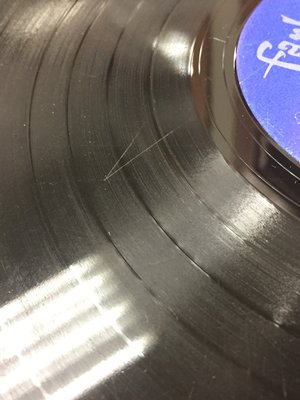How to buy and inspect used records
Cratedigging is one of our favorite pastimes. Every stack of vinyl might hold a treasure, and it’s easy to spend hours flipping. But the condition of used records can vary greatly, and it’s all too easy to grab a damaged album that delivers lackluster sound. So here are some things to look for the next time you are considering purchasing a used record.

First and most importantly: whenever possible, listen to the album before buying. Many record stores have listening stations for this purpose. There is truly no substitute for a thorough listening test.
Before inspecting your used record finds, consider these factors:
- Musical genre. Are you buying a loud, distorted rock album where minor flaws will be masked? Is this a quiet jazz album where noise and scratches will ruin the mood?
- How expensive is the record and does the condition match that price? If the price and the quality don’t match, is the seller willing to drop the price?
1. Setup/approach: Make sure you have a clear, strong light source to work with. In some of the steps below, you’ll be looking for minor flaws on the record’s surface, which can easily be missed in low light.
2. Sleeve/packaging: A quick glance at the record sleeve can give you a preview of the album’s condition.
Good signs: You may have found a record worth bringing home
- Sleeve is in a plastic bag or is still in the original shrinkwrap.
- Record is in an innersleeve (i.e. the paper envelope within the sleeve).
- Opening of the innersleeve is facing up and not aligned with the opening of the outer sleeve.
“Meh” signs: Don't put the record back yet, but be on the lookout for other warning signs
- Corners of the sleeve are dog-eared.
- Edges of the sleeve are partially split, but are still able to contain the record.
Bad signs: Proceed at your own risk
- Innersleeve is missing. Records are rarely in good condition if they’ve been stored without the innersleeve.
- One or more edges are completely split, letting the record easily fall out of the sleeve.
- Water damage to the cover and/or innersleeve.

Our copy of Cosmo's Factory is in a sorry state: ripped edges and no innersleeve.

On the other hand, Bowie is in great shape. Minimal wear and tear on the sleeve.
3. Warping: Before carefully inspecting the surface of the record, hold it flat at eye-level to check whether it is bent or warped. Warping can cause the pitch to shift or warble when you play the record, and can contribute to tracking issues.
4. Record surface: To inspect the playing surface, hold the record within a few inches of your face and angle it so that it reflects the light source. Gradually rotate the record as you look for the signs below.
Good signs: You may have found a record worth bringing home
- Record has a clear “sheen” when you look at the reflection of the light in the grooves. If you’ve bought much new vinyl, you know what this looks like - smooth and slick. You should expect to see more minor blemishes on a used record, but the way it reflects the light will indicate how worn-down the grooves are.
- Short fibers on the record that look like “hair.” These hairs come from the paper innersleeve and sometimes cling to the record. If you see them, that usually means the record hasn’t seen much use, and is in good shape.
“Meh” signs: Don't put the record back yet, but be on the lookout for other warning signs
- Small patches of dirt or dust on the record. These add noise to playback but can often be removed with a brush or cleaning solution.
- Light/shallow scratches. Gently check these with a fingernail - if you can’t feel the dent, you probably won’t hear it either.
Bad signs: Proceed at your own risk
- Scratches running perpendicular to the grooves that you can feel with your finger. These add audible noise and “pops” during playback.
- Scratches running parallel or diagonal to the grooves. These may cause the needle to skip or get stuck in a loop.
- Cracks, severe warping, deep cuts. Albums in this condition are usually unplayable (or close to it), and you’re better off steering clear.

Surprisingly, this scuff is shallow enough that sound quality is not affected.

Parallel scratches like this can make the needle skip.

Perpendicular scratches like this cause loud pops.
With these guidelines in mind, get out there and start flipping! We’ve found gems everywhere from meticulously curated record stores to flea markets and yard sales. A music collection is always a work in progress, and we hope you enjoy building yours.
Additional reading:
Click here to see the Goldmine Standard vinyl grading system, used by online record marketplace Discogs.
Reddit contributor u/IHeartThe80s has compiled this thorough guide for inspecting used records.